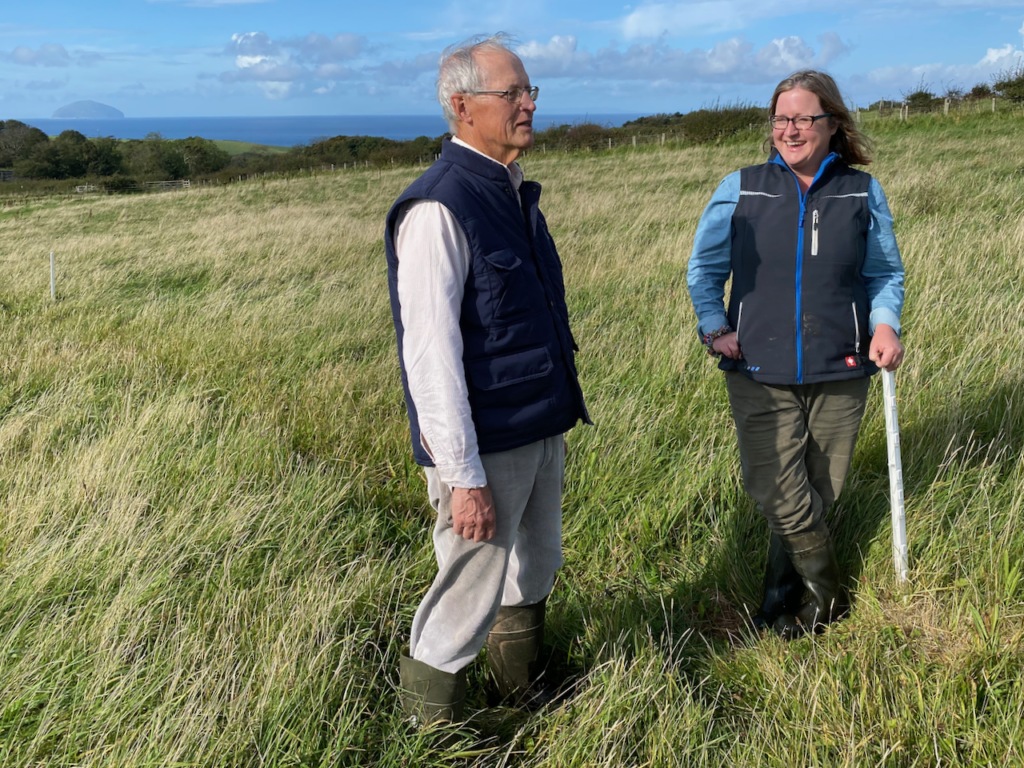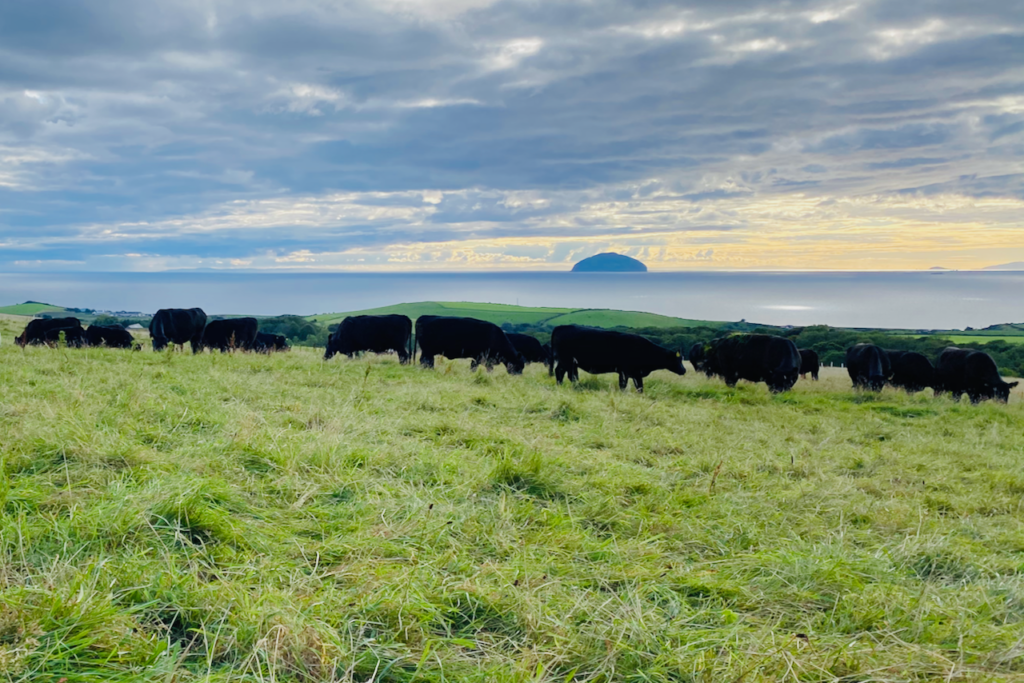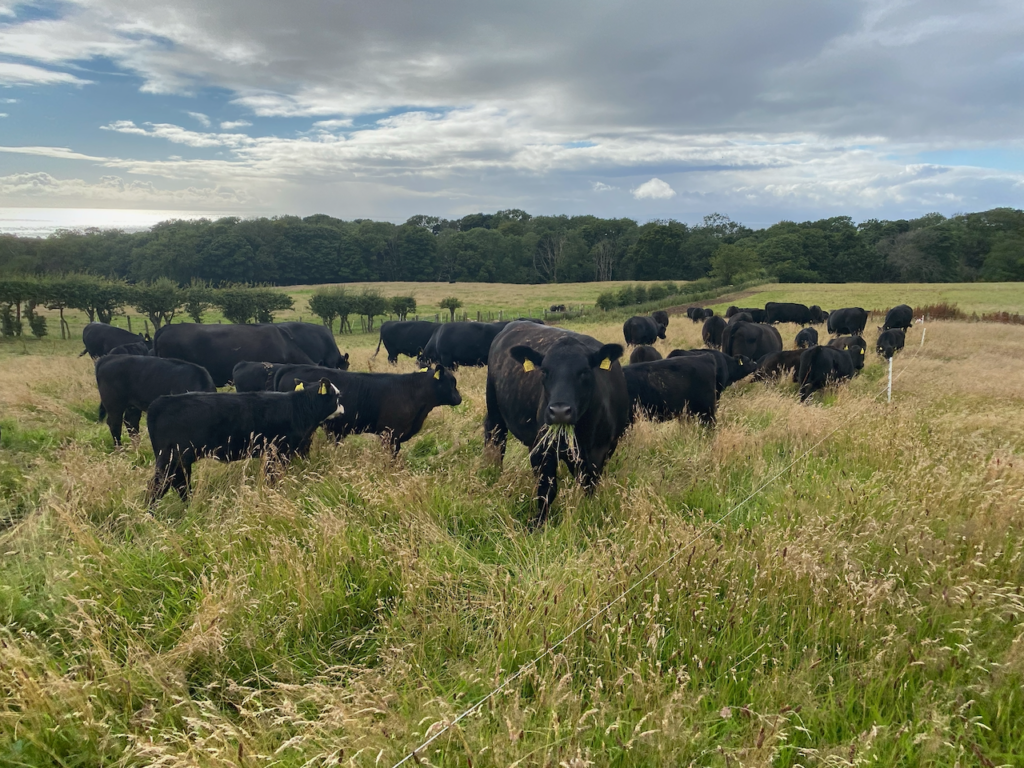Heather Close, Balsar Glen 1/3
Tell us about your farm, its location, size, altitude, climate, soils, enterprises, organic/PfL/other status

Heather and her father, Philip
I (Heather Close) farm with my Dad (Philip Close). The farm is right on the coast of South West Scotland, near the village of Turnberry in South Ayrshire. It is called Littleton. We market as Balsar Glen.
Our climate is pretty mild, thanks to the Gulf Stream. We don't often get heavy frosts, but we do get quite a lot of rain. Yearly rainfall is generally in the region of 1000-1200mm but in 2020 it was 1500mm with 270mm in a very memorable February!
The farm elevation runs from 40m above sea level to about 140m. We are on glacial till. The clay content of the soil is stable across the farm at 20/22% but the amount of sand decreases with distance from the coast. The farm includes 117 Ha of grazing land and 14 ha of woodland.
We are a beef farm. Predominantly a suckler herd, though we sold our first 100% grass-fed beef boxes in 2021.
Dad started breeding Aberdeen Angus on the farm in 2004 and has been outwintering since December 2010, which is quite unusual in SW Scotland. After 2022 calving the herd size stands at 130, the majority of which are from commercial Aberdeen Angus stock but have been bred on the farm to suit this low input outwintering system. We also have some Lents Anxiety 4th and Traditional Herefords, some Native Aberdeen Angus and a few first and second crosses between the breeds.
In the last three years we have really focused on managing our grazing to enable us to carry more cattle over our wet winters. This is crucial for the profitability of the farm. We have been applying Holistic Planned Grazing with very extended rest periods, influenced by Jaime Elizando's work. Something is working as each winter we have had more grass than the year before.
We intend to become PfL Certified this year.

Cows and Ailsa Craig
Share with us a general description of the biodiversity on your farm – essentially above ground (but reference to below ground if relevant) – both flora and fauna.
Most of the grazing is improved permanent pasture, some of it very diverse. When Dad took over the farm in the late 1990s it had been let out for grazing for a couple of decades, and nothing had been ploughed. This meant the fields coped far better with outwintering than they would have otherwise, but there was still a steep learning curve. There are a few Ha of rush grazing also. We avoid these areas in the winter when it is most wet.
The farm is bounded on two sides by water ways, one in the beautiful steep-sided Balsarrock Glen.
Our most diverse fields are full of a variety of grasses, clovers, plantain, dandelions, docks, buttercups, bitter cress, vetch, birdsfoot trefoil, sneezewort, rushes, thistles, chickweed, speedwells, celandine, knapweed, orchids, wild carrot, yellow rattle and others that slip my mind right now.
In the last couple of years, I have really come to appreciate the benefits of structural diversity and are seeing the untidiness of our fields in a new way. Hares, pheasants, fawns and calves hide themselves and their offspring in the tufts of cocksfoot, rushes and docks. Finches love grass seed heads and pollinators can't get enough of thistles!
Our long grass also hides any number of small mammals and we have a kestrel, called Kevin, who hunts with our cows in winter. He knows that their twice daily moves to fresh grass will disturb voles and he uses this knowledge to his advantage!

Tall grass grazing
Shortly after Dad started daily cow moves he was able to stop treating the herd for worms. This hasmeant that their dung is a healthy food source and breeding site for invertebrates, including dung beetles. These insects are in turn food for local birds. We notice that dung piles, and the worms and maggots that live in them, are appreciated by corvids and badgers in the winter. They get a meal and in doing so help spread and dry out the dung at a time when dung beetles are inactive.
Of the 14Ha of woodland, a third are conifer windbreaks, the rest is mixed, including around 8 Ha of ancient woodland. We are just starting to let the cows into these areas, so it will be interesting to note any changes.
We soil test regularly and last year we carried out some Elaine Ingham Soil Food Web tests before and after the application of compost teas and found that the bacterial to fungi ration had improved significantly.



